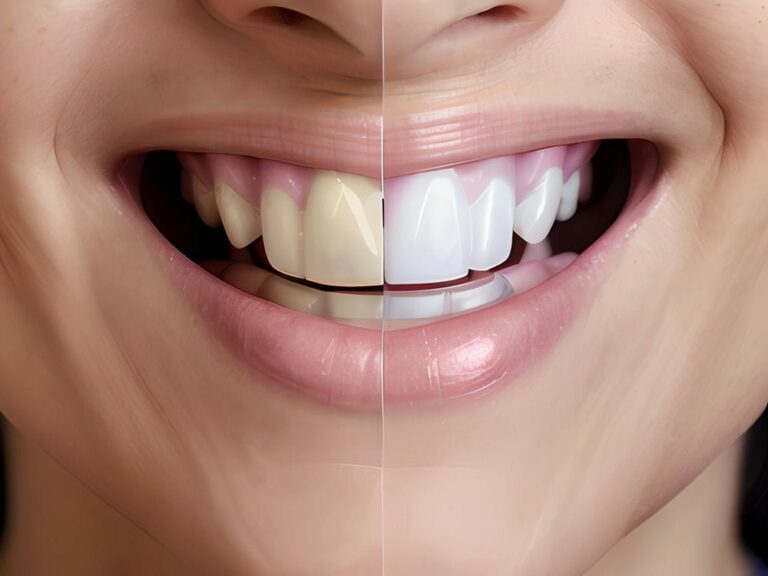Importance of Oral Health: Understanding the Global Burden of Oral Diseases
Importance of Oral Health: Understanding the Global Burden of Oral Diseases
Oral health is a vital aspect of overall well-being, yet it is often overlooked and neglected. The burden of oral diseases has a significant impact on individuals, communities, and countries worldwide. Understanding this global burden is crucial in developing effective strategies to reduce the prevalence and severity of oral diseases.
Firstly, the global impact of oral diseases cannot be underestimated. It affects billions of people across all age groups and socioeconomic backgrounds. Dental caries (tooth decay) alone affects 2.3 billion people globally, making it the most prevalent condition worldwide. Untreated dental caries can lead to pain, infection, difficulty in eating and speaking, and even tooth loss. Moreover, poor oral health has been linked to various systemic conditions such as cardiovascular disease and diabetes, further emphasizing its significance in overall health.
Dentistry plays a critical role in addressing the burden of oral diseases. However, access to dental care remains a challenge for many individuals around the world. Limited availability of affordable dental services, especially in low-income countries, contributes to delayed or inadequate treatment. This highlights the need for increased investment in oral healthcare infrastructure and workforce development globally.
Education also plays a pivotal role in reducing the burden of oral diseases worldwide. By promoting good oral hygiene practices and raising awareness about the importance of regular dental check-ups, individuals can take proactive steps towards maintaining their oral health. Additionally, educating healthcare professionals about the prevention and management of oral diseases can help integrate oral healthcare into primary healthcare systems more effectively.
In conclusion, understanding the global burden of oral diseases is essential for developing comprehensive strategies to tackle this significant public health issue. Dentistry and education are key components in reducing this burden by improving access to quality dental care and promoting preventive measures at both individual and community levels. By prioritizing oral health on a global scale, we can work towards achieving better overall health outcomes for people worldwide.
Prevention as the Key: Effective Strategies for Promoting Dental Hygiene
Prevention as the Key: Effective Strategies for Promoting Dental Hygiene
To effectively reduce the burden of oral diseases worldwide, prevention must be prioritized. Awareness and education play a crucial role in promoting good dental hygiene practices and ensuring early intervention. By understanding the epidemiology of oral diseases, targeted interventions can be implemented to address specific risk factors and promote better oral health outcomes.
One effective strategy is to focus on raising awareness about the importance of maintaining good dental hygiene. This can be done through community campaigns, schools, and healthcare facilities. By educating individuals about proper brushing techniques, regular flossing, and the importance of limiting sugary foods and drinks, people can take proactive steps towards preventing dental caries and other oral diseases.
In addition to awareness campaigns, targeted interventions should also be implemented based on the epidemiology of oral diseases in different populations. For example, if a specific population has a high prevalence of dental caries due to limited access to fluoridated water, interventions could include providing fluoride supplements or implementing community water fluoridation programs. By tailoring interventions according to specific risk factors and populations, the burden of oral diseases can be effectively reduced.
By emphasizing prevention as the key strategy for promoting dental hygiene, individuals can take control of their own oral health while reducing their reliance on costly treatment options. Furthermore, by implementing targeted interventions based on epidemiological data, public health efforts can be more efficient and effective in reducing the global burden of oral diseases. Through these comprehensive strategies that combine awareness, education, and targeted interventions, we can work towards improving overall oral health outcomes worldwide.
Targeted Interventions: Addressing Specific Oral Diseases Worldwide
To effectively reduce the burden of oral diseases worldwide, it is important to implement targeted interventions that address specific risk factors and populations. By understanding the epidemiology of oral diseases, healthcare systems can develop strategies to prevent and treat these conditions more effectively.
One key aspect of targeted interventions is addressing specific risk factors. For example, if a certain population has a high prevalence of gum disease due to smoking, interventions can focus on tobacco cessation programs and education about the risks of smoking on oral health. By targeting these specific risk factors, healthcare providers can help individuals make informed decisions and take proactive steps towards better oral health.
Another important component of targeted interventions is aligning with existing health policies. This involves integrating oral health into overall healthcare systems and ensuring that dental services are accessible and affordable for all populations. By incorporating dental check-ups and treatments as part of routine healthcare, individuals are more likely to seek preventive care and receive timely treatment for any oral diseases.
By implementing targeted interventions based on specific risk factors and aligning with existing health policies, we can effectively address the burden of oral diseases worldwide. These strategies not only promote better access to dental care but also empower individuals to take control of their own oral health. Through comprehensive efforts that combine awareness, education, and targeted interventions, we can work towards achieving improved overall oral health outcomes globally.
Public Health Initiatives: Promoting Oral Health Education and Awareness
Oral health promotion is a crucial component of reducing the burden of oral diseases worldwide. By implementing community programs that focus on education and awareness, we can empower individuals to take proactive steps towards better oral health. These programs can include initiatives such as school-based dental screenings, oral hygiene education in community centers, and public campaigns to raise awareness about the importance of oral health.
One key aspect of these community programs is addressing health disparities. Oral diseases disproportionately affect certain populations, such as low-income individuals and marginalized communities. By specifically targeting these populations with tailored interventions, we can help bridge the gap in access to dental care and promote better oral health outcomes for all.
Furthermore, community programs can also play a role in addressing cultural barriers that may prevent individuals from seeking dental care. By incorporating cultural sensitivity into educational materials and outreach efforts, healthcare providers can create a more inclusive environment where individuals feel comfortable seeking preventive care and treatment.
By implementing comprehensive community programs that prioritize oral health promotion, we can make significant strides in reducing the burden of oral diseases worldwide. Through education, awareness, and targeted interventions that address specific populations and health disparities, we can empower individuals to prioritize their oral health and ultimately improve overall oral health outcomes globally.
Access to Care: Improving Treatment Options for Oral Diseases
Access to care is a critical factor in improving oral health outcomes and reducing the burden of oral diseases worldwide. Many individuals, especially those in low-income communities or marginalized populations, face significant barriers when it comes to accessing dental care. These barriers can include financial constraints, lack of transportation, and limited availability of dental providers in certain areas.
To address these challenges, strategies for improving access to care must be implemented. This can involve increasing the number of dental professionals in underserved areas through loan forgiveness programs or incentives. Additionally, telehealth and mobile dental clinics can be utilized to bring dental services directly to communities that may have limited access to traditional dental offices.
Another important aspect of improving access to care is promoting preventive oral care practices. By educating individuals about proper oral hygiene routines and the importance of regular dental check-ups, we can empower them to take control of their oral health and prevent the development of more serious oral diseases. Community programs that provide free or low-cost preventive services, such as fluoride treatments or sealants, can also play a crucial role in ensuring that individuals have access to these essential preventive measures.
By prioritizing access to care and promoting preventive oral health practices, we can work towards improving oral health outcomes globally. It is essential that efforts are made not only to increase the availability of dental services but also to educate individuals about the importance of maintaining good oral hygiene habits. Through these initiatives, we can empower individuals to take charge of their oral health and ultimately reduce the burden of oral diseases worldwide.
Innovative Approaches: Harnessing Technology for Oral Disease Prevention
In order to further reduce the burden of oral diseases worldwide, it is crucial to implement innovative approaches that harness technology for oral disease prevention. This can involve utilizing technology for infection control measures, such as implementing digital systems for tracking and monitoring infection rates in dental offices. By using these systems, dental providers can quickly identify and address any potential outbreaks or infection risks, ultimately improving the overall safety and quality of care.
Additionally, technology can also play a significant role in oral health education. With the rise of smartphones and internet access, there are now more opportunities than ever to reach individuals with important oral health information. Mobile apps and online platforms can be utilized to provide interactive educational resources, including videos, articles, and quizzes that promote proper oral hygiene practices and raise awareness about the importance of regular dental check-ups.
Furthermore, technology can also be leveraged for oral health surveillance purposes. By utilizing data analytics and artificial intelligence, researchers and public health officials can gather valuable insights into patterns of oral disease prevalence and risk factors. This information can then be used to develop targeted interventions and policies that effectively address the specific needs of different communities.
Incorporating technology into oral disease prevention efforts has the potential to revolutionize how we approach oral health on a global scale. By leveraging digital tools for infection control measures, oral health education, and surveillance purposes, we can enhance our ability to prevent and manage oral diseases more effectively. This will not only improve individual outcomes but also contribute to reducing the overall burden of oral diseases worldwide.
Collaborative Efforts: International Partnerships in Reducing the Burden of Oral Diseases
To further reduce the burden of oral diseases worldwide, it is important to focus on promoting oral health equity and implementing comprehensive oral health initiatives.
Firstly, addressing oral health disparities is crucial in achieving oral health equity. This involves ensuring that everyone has equal access to affordable and quality dental care, regardless of their socioeconomic status or geographical location. To achieve this, governments and organizations can implement policies and programs that prioritize underserved populations, provide financial assistance for dental treatment, and establish community-based oral health clinics in areas with limited access to care.
Secondly, launching effective oral health initiatives can significantly contribute to reducing the prevalence of oral diseases. These initiatives can include targeted preventive measures such as community water fluoridation programs, school-based dental sealant programs, and regular dental screenings for children. Additionally, public awareness campaigns can be developed to educate individuals about the importance of good oral hygiene practices and regular dental visits. By combining these efforts with accessible dental services, we can empower individuals to take control of their own oral health and prevent the onset of common oral diseases.
Lastly, collaboration between countries is essential in reducing the burden of oral diseases globally. International partnerships can facilitate knowledge exchange and resource sharing to improve access to dental care in low-income countries or regions with limited resources. Through collaborative efforts, countries can work together to develop standardized guidelines for prevention and treatment strategies, conduct joint research projects on global oral health issues, and share best practices for improving overall oral health outcomes.
By focusing on promoting oral health equity through comprehensive initiatives and fostering international collaborations, we can make significant progress in reducing the burden of oral diseases worldwide. It is imperative that governments, organizations, and healthcare professionals come together to prioritize the importance of good oral health as an integral part of overall well-being.
Policy and Advocacy: Supporting Government Actions for Better Oral Health
To further reduce the burden of oral diseases worldwide, it is crucial to address oral health disparities and promote oral health equity. This means ensuring that everyone, regardless of their socioeconomic status or geographical location, has equal access to affordable and quality dental care. Governments and organizations can implement policies and programs that prioritize underserved populations, provide financial assistance for dental treatment, and establish community-based oral health clinics in areas with limited access to care.
Launching effective oral health initiatives is another key strategy for reducing the prevalence of oral diseases. These initiatives can include targeted preventive measures such as community water fluoridation programs, school-based dental sealant programs, and regular dental screenings for children. Public awareness campaigns can also be developed to educate individuals about the importance of good oral hygiene practices and regular dental visits. By combining these efforts with accessible dental services, we can empower individuals to take control of their own oral health and prevent the onset of common oral diseases.
Collaboration between countries is essential in reducing the burden of oral diseases globally. International partnerships can facilitate knowledge exchange and resource sharing to improve access to dental care in low-income countries or regions with limited resources. Through collaborative efforts, countries can work together to develop standardized guidelines for prevention and treatment strategies, conduct joint research projects on global oral health issues, and share best practices for improving overall oral health outcomes.
By promoting oral health equity through comprehensive initiatives and fostering international collaborations, significant progress can be made in reducing the burden of oral diseases worldwide. It is imperative that governments, organizations, and healthcare professionals come together to prioritize the importance of good oral health as an integral part of overall well-being.
Integrating Oral Health into Primary Healthcare Systems Worldwide
To further reduce the burden of oral diseases worldwide, it is crucial to address oral health disparities and promote oral health equity. This means ensuring that everyone, regardless of their socioeconomic status or geographical location, has equal access to affordable and quality dental care. Governments and organizations can play a key role in supporting these efforts by implementing policies and programs that prioritize underserved populations and provide financial assistance for dental treatment.
One effective strategy is to establish community-based oral health clinics in areas with limited access to care. These clinics can provide essential dental services to individuals who may otherwise go without treatment. Additionally, governments can allocate resources towards improving oral health infrastructure in underserved areas, such as training more dental professionals and increasing the availability of dental equipment and supplies.
Launching effective oral health initiatives is another important step towards reducing the prevalence of oral diseases. These initiatives can include targeted preventive measures such as community water fluoridation programs, which have been proven to be highly effective in preventing tooth decay. School-based dental sealant programs are also beneficial, as they provide protective coatings on children’s teeth to prevent cavities. Regular dental screenings for children can help identify any early signs of oral diseases and ensure timely intervention.
By combining these efforts with accessible dental services, we can empower individuals to take control of their own oral health and prevent the onset of common oral diseases. Public awareness campaigns can be developed to educate individuals about the importance of good oral hygiene practices and regular dental visits. By promoting a culture of prevention and education, we can shift the focus from reactive treatment to proactive prevention.
Collaboration between countries is essential in reducing the burden of oral diseases globally. International partnerships can facilitate knowledge exchange and resource sharing to improve access to dental care in low-income countries or regions with limited resources. Through collaborative efforts, countries can work together to develop standardized guidelines for prevention and treatment strategies, conduct joint research projects on global oral health issues, and share best practices for improving overall oral health outcomes.
By promoting oral health equity through comprehensive initiatives and fostering international collaborations, significant progress can be made in reducing the burden of oral diseases worldwide. It is imperative that governments, organizations, and healthcare professionals come together to prioritize the importance of good oral health as an integral part of overall well-being. Together, we can create a world where everyone has equal access to quality dental care and the opportunity for a healthy smile.
Future Directions: Advancements in Research and Development for Oral Disease Prevention and Treatment
Future Directions: Advancements in Research and Development for Oral Disease Prevention and Treatment
As we continue to strive for a world with improved oral health outcomes, it is essential to focus on advancements in research and development for the prevention and treatment of oral diseases. By investing in innovative solutions, we can further reduce the burden of oral diseases worldwide.
Significant progress has already been made in the field of dental technology. One area of advancement is in the development of minimally invasive treatments. These procedures aim to preserve as much healthy tooth structure as possible while effectively treating dental conditions. Minimally invasive techniques, such as laser dentistry, allow for precise and targeted treatment, reducing discomfort and promoting faster healing.
Additionally, there have been significant advancements in preventive measures. Researchers are exploring new ways to prevent tooth decay and gum disease through the use of probiotics, antimicrobial agents, and bioactive materials. These innovations have the potential to revolutionize oral disease prevention by targeting the underlying causes and promoting a healthier oral microbiome.
In recent years, there has also been growing interest in regenerative dentistry approaches. This field focuses on using stem cells or tissue engineering techniques to regenerate damaged teeth or tissues. By harnessing the body’s natural healing abilities, regenerative dentistry holds promise for restoring lost dental structures and improving overall oral health outcomes.
By investing in research and development, we can pave the way for future breakthroughs in oral disease prevention and treatment. Continued collaboration between researchers, healthcare professionals, governments, and organizations will be crucial in driving innovation forward. Together, we can work towards a future where oral diseases are managed more effectively, resulting in improved overall well-being for individuals worldwide.
FAQs
Q: What is the burden of oral diseases worldwide?,
A: The burden of oral diseases worldwide refers to the overall impact and prevalence of oral health issues globally.,
Q: What are some common oral diseases?,
A: Some common oral diseases include dental caries (tooth decay), periodontal (gum) diseases, oral cancers, and oral manifestations of HIV/AIDS.,
Q: How can we reduce the burden of oral diseases?,
A: Strategies for reducing the burden of oral diseases include promoting oral health education, improving access to dental care, implementing preventive measures, and addressing risk factors.,
Q: What role does oral health education play in reducing the burden of oral diseases?,
A: Oral health education plays a crucial role in reducing the burden of oral diseases by raising awareness about proper oral hygiene practices, the importance of regular dental check-ups, and the impact of diet on oral health.,
Q: How can access to dental care be improved?,
A: Access to dental care can be improved by increasing the number of trained dental professionals, establishing dental clinics in underserved areas, and implementing policies that ensure affordable dental services for all.,
Q: What preventive measures can be taken to reduce oral diseases?,
A: Preventive measures to reduce oral diseases include community water fluoridation, dental sealants, vaccinations against oral infections, and encouraging healthy habits such as regular brushing and flossing.,
Q: What are some common risk factors for oral diseases?,
A: Common risk factors for oral diseases include poor oral hygiene, tobacco and alcohol use, an unhealthy diet high in sugar, and lack of access to dental care.,
Q: How can poor oral hygiene contribute to oral diseases?,
A: Poor oral hygiene contributes to oral diseases by allowing the buildup of plaque, which can lead to tooth decay, gum diseases, and other oral health issues.,
Q: What is community water fluoridation?,
A: Community water fluoridation is the process of adjusting the fluoride content in public water supplies to an optimal level that helps prevent tooth decay and promotes oral health.,
Q: Why is addressing risk factors important in reducing the burden of oral diseases?,
A: Addressing risk factors is important in reducing the burden of oral diseases because by identifying and addressing the underlying causes, we can prevent the development and progression of oral health issues.



















